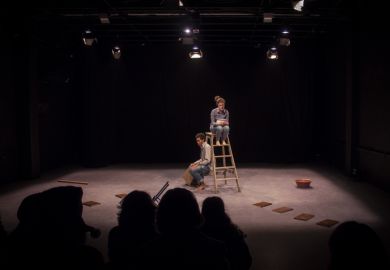Two different university cultures are being brought together in a new
£5.5 million partnership between Cranfield University and the University
of the Arts London.
It is hoped that the joint initiative by Cranfield, a postgraduate
institution focused on business, manufacturing and science, and the
University of the Arts, will lead to more creative design in industries
such as health, manufacturing and aerospace. This will boost designers'
awareness of the practical side of product design, including the cost of
manufacture.
The new Centre for Creative Design at Cranfield is supported by a £3.8
million governing grant. Its aims, according to its business plan, are to
set up "a creative environment with some of the characteristics of a
design agency, but with a unique atmosphere where engineers and managers
are just as at home".
"As an engineer, I'm not trained to understand what excites the customer.
I understand functionality," said Rajkumar Roy, head of Cranfield's
Decision Engineering Centre. He cited the iPhone as an example of a
product whose design has been crucial to its success.
"We want to improve design thinking by engineers and scientists across the
whole university," he said. "They need to think about functionality and
how affordable a product is, but also how it distinguishes itself from
other products on the market and whether any new materials could be
used."
Both universities will offer a Masters in Creative Design through the
centre, starting in 2008, with shared modules and jointly appointed staff.
The centre will also provide creative consultancy and training to
traditional manufacturing and technology companies.
"It's not that people aren't creative, but management often doesn't
promote creativity and neither does the organisational structure," said
Professor Roy.
While Cranfield is sharing its expertise in research, the University of
the Arts is helping Cranfield with its teaching.
Mike Bradshaw, dean of the University of the Arts' School of Graphic
Design, said: "Cranfield's work on soil science is all about charts, which
are pretty uninteresting. By using graphic designers we can bring the
subject alive."
Register to continue
Why register?
- Registration is free and only takes a moment
- Once registered, you can read 3 articles a month
- Sign up for our newsletter
Subscribe
Or subscribe for unlimited access to:
- Unlimited access to news, views, insights & reviews
- Digital editions
- Digital access to THE’s university and college rankings analysis
Already registered or a current subscriber?



